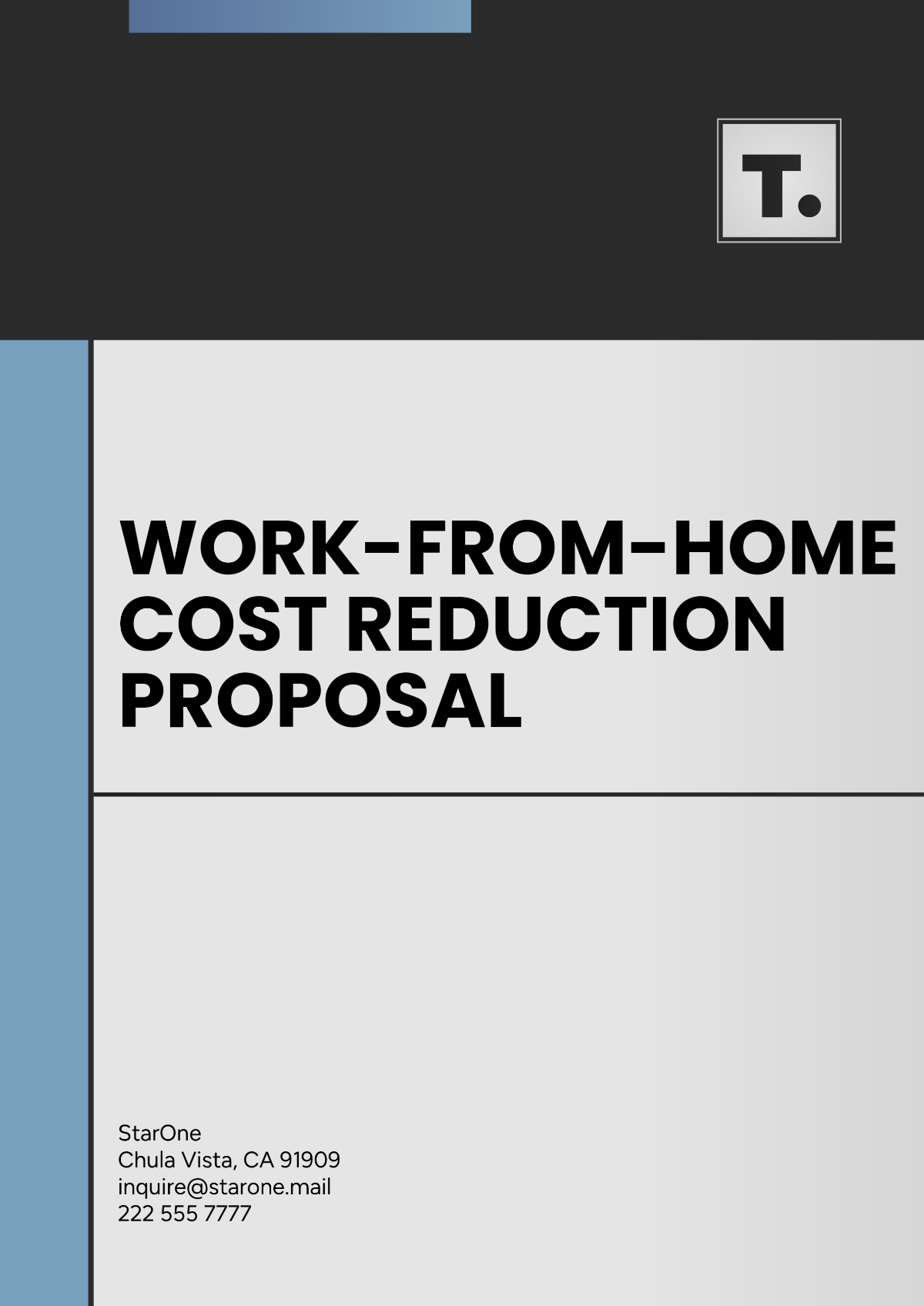Printable Work-from-Home Cost Analysis Proposal
Prepared for: [Your Company Name]
Prepared by: [Your Name]
Date: January 10, 2060
Objective:
The purpose of this proposal is to provide a detailed analysis of the costs associated with transitioning to a work-from-home (WFH) model for [Your Company Name], evaluating both direct and indirect expenses, and determining the financial implications for the company.
1. Current Setup Overview:
Currently, [Your Company Name] operates with 50 employees working in an office environment. The details of the office setup are as follows:
Office space: 10,000 square feet located in downtown New York.
Monthly office rent: $15,000
Utilities: $2,500 (electricity, water, internet)
Office supplies: $1,200 (stationery, printer paper, etc.)
Technology infrastructure: Company-provided desktops, local area network (LAN), and office software suite.
2. Work-from-Home Setup:
A transition to a work-from-home model would require the following setup:
Technology & Equipment:
Laptops for 50 employees: $25,000 (one-time expense)
Monitors for home offices: $10,000 (one-time expense)
Home office furniture (desks, chairs): $7,500 (one-time expense)
Virtual Private Network (VPN) and secure communication tools: $500 per month
Monthly Technology & Communication:
Subscription to remote work tools (Zoom, Microsoft Teams, etc.): $1,000 per month
Internet reimbursement for employees: $50 per employee, totaling $2,500 per month.
Initial Setup Costs:
Total Initial Setup for Equipment: $42,500 (one-time expense)
Ongoing monthly costs: $4,000 (technology, internet, subscriptions)
3. Comparative Cost Analysis:
A. In-Office Costs:
Item | Current Monthly Cost | Annual Cost |
|---|---|---|
Rent and utilities | $17,500 | $210,000 |
Office Supplies | $1,200 | $14,400 |
Employee travel expenses | $3,000 | $36,000 |
Office-related perks (snacks, coffee) | $500 | $6,000 |
B. Work-from-Home Costs:
Item | Estimated Monthly Cost | Annual Cost |
|---|---|---|
Equipment (laptops, monitors, furniture) | $42,500 (one-time) | $42,500 (one-time) |
Technology & software (VPN, project management tools) | $1,500 | $18,000 |
Internet and communication tools | $2,500 | $30,000 |
Home office setup expenses (desks, chairs) | $7,500 (one-time) | $7,500 (one-time) |
Employee internet reimbursement | $2,500 | $30,000 |
C. Total Annual Savings/Costs Comparison:
Category | In-Office Annual Cost | WFH Annual Cost | Savings/Costs Difference |
|---|---|---|---|
Total Costs | $266,400 | $128,000 | $138,400 savings |
4. Potential Savings and Benefits:
Office Space: [Your Company Name] could save approximately $82,500 per year by eliminating the office lease.
Employee Commuting: A reduction in employee commuting costs could save the company an estimated $36,000 annually (if reimbursed for transportation).
Increased Productivity: Studies show employees working from home have a 15% increase in productivity due to fewer distractions and a better work-life balance.
Environmental Impact: By transitioning to a remote model, [Your Company Name] can reduce its carbon footprint, cutting down on office electricity usage and commuting-related emissions.
5. Risks and Considerations:
Employee Engagement: Maintaining team collaboration and morale might be challenging without regular in-person meetings.
Technology Security: Remote work presents security risks regarding data breaches and access to sensitive information. [Your Company Name] will need to invest in strong cybersecurity measures.
Home Office Setup Variability: Not all employees will have the ideal home office environment, leading to potential productivity issues.
Compliance Issues: Ensure that the company adheres to labor laws and tax regulations regarding remote work. There may be state-specific tax implications when employees work from home in different locations.
6. Conclusion and Recommendations:
After conducting a comprehensive cost analysis, it is evident that transitioning to a work-from-home model could result in significant cost savings of approximately $138,400 annually for [Your Company Name]. Additionally, the benefits of increased productivity, reduced office space costs, and a smaller environmental footprint make this transition an attractive option.
However, consideration must be given to the risks, such as maintaining employee engagement and ensuring secure remote access. It is recommended that [Your Company Name] move forward with the WFH model and implement additional measures to address the risks, particularly in areas of cybersecurity and employee communication.


























